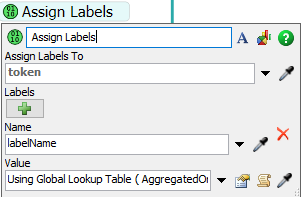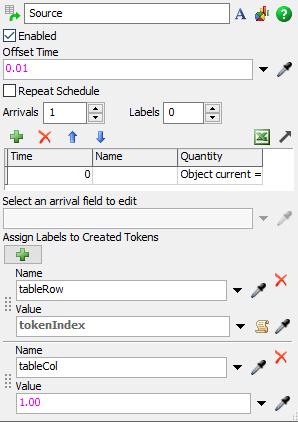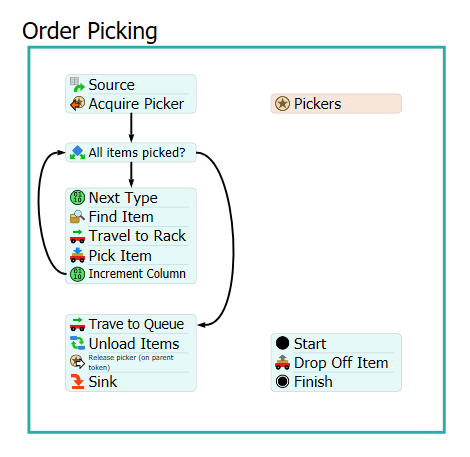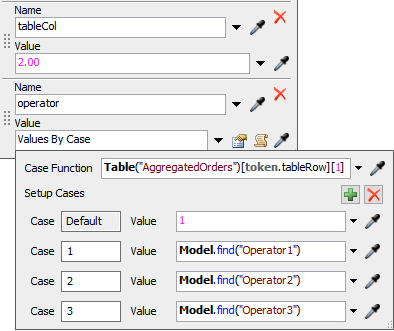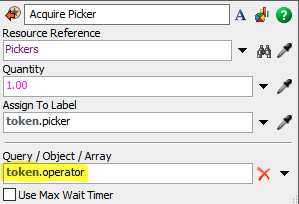Hello, In this model, I want to make picker to pick the specific item by global table after I generate the items to fill up all racks.
About my operation:
According to the above, first I create a global table(named: AggregatedOrders) to get picking task sequence. The global table is shown below:

For this example, the table contains 5 tasks, and each task have the items(the number is label value of item) that need to be picked.
My goal:
Like as: In task1, it need to assign picker1 to go item10->item100->item150->item80 location to pick item(when item value is 0, Indicates that no item need to be picked, only pick to itemD and task ends), then go back the queue to drop off picked items, and waiting for the next task.
--To clearly describe my goal, my problem as shown below:
I want to use processflow to read global table then assign the tasks to the pickers, but I'm not sure whether such a global table set above can be read and how to assign tasks to idle pickers.
At this stage, I draw the expected processflow, and hope that the experts will provide guidance.
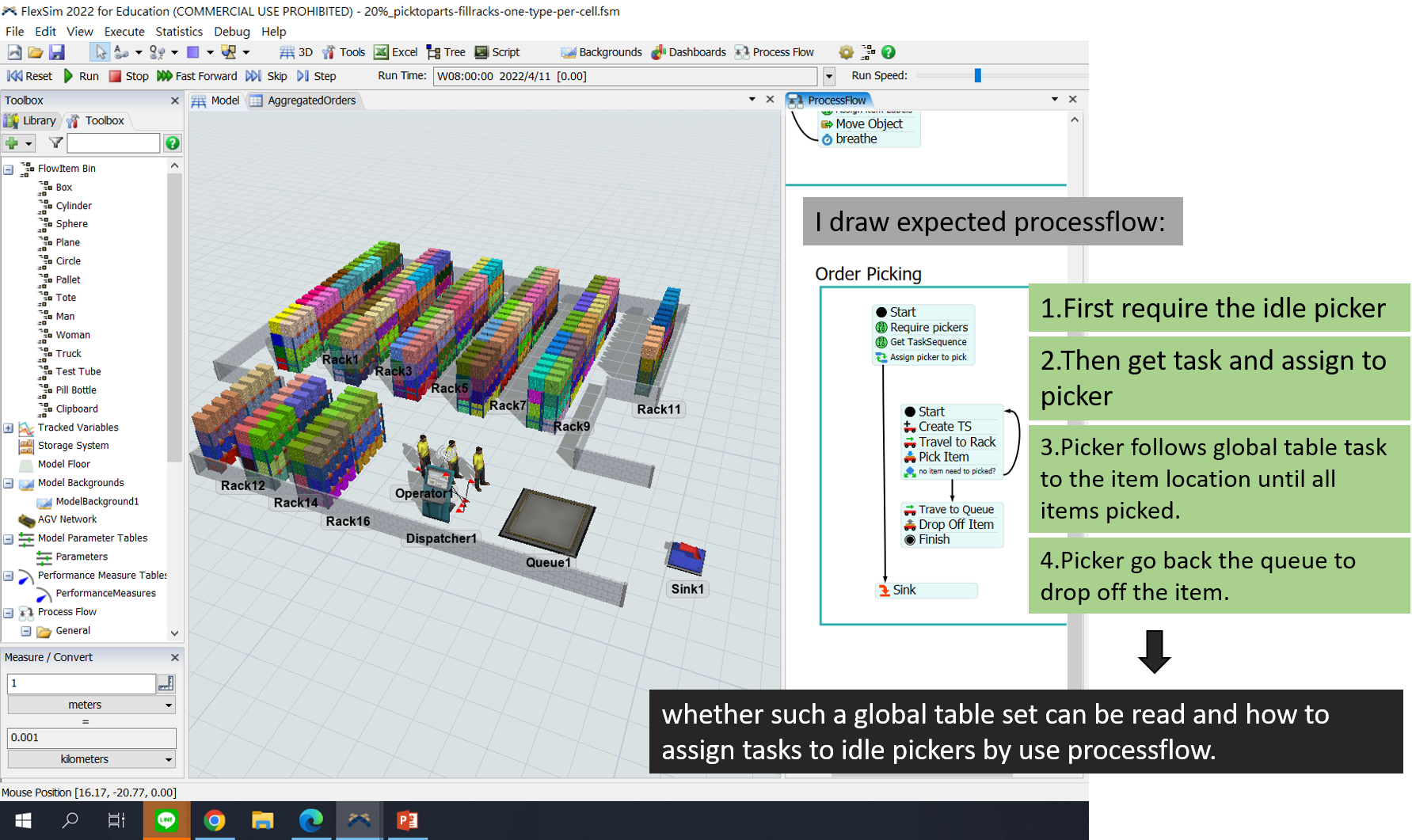
Regards,
Kevin

